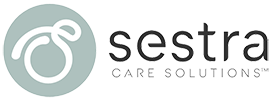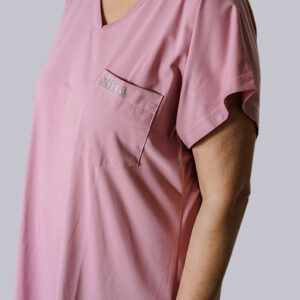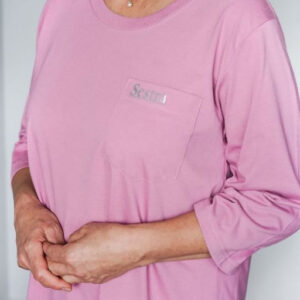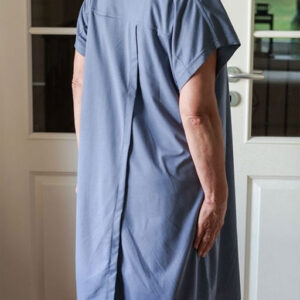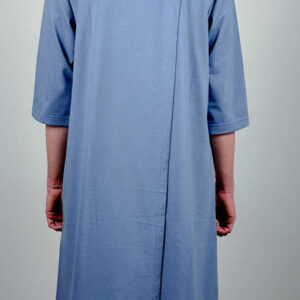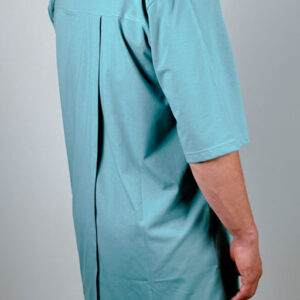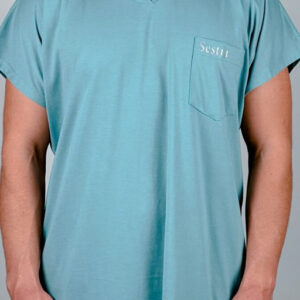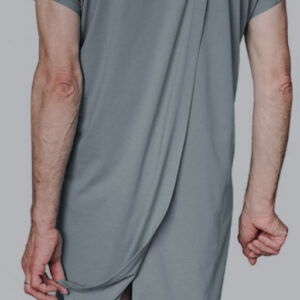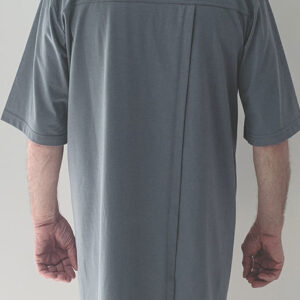Adaptive clothing for elderly and people with special needs
Adaptive clothing explained
Adaptive clothing is a term used to describe suitable clothing for patients in care settings. Other terms people may use include care clothing, dignity clothing, clothing for disabled, aged care clothing or clothing for elderly in nursing home.
Having your loved ones in care here in Australia, whether this be longer term aged care, or any other context where special needs have to be considered, provides many challenges to family members and friends. Clothing may not be one of the first things which come to mind, yet this is one of the most important things which have a significant impact on a sense of comfort and wellbeing.
Whether your loved one is in care, or whether you are the carer, dressing and caring tasks are made much easier by finding suitable clothing.
As a nurse and seamstress, I felt I was in the perfect position to both have a very practical understanding of the issues for both carers and their loved ones, but also to develop a solution that was not only functional but one which focussed on the need for dignity.
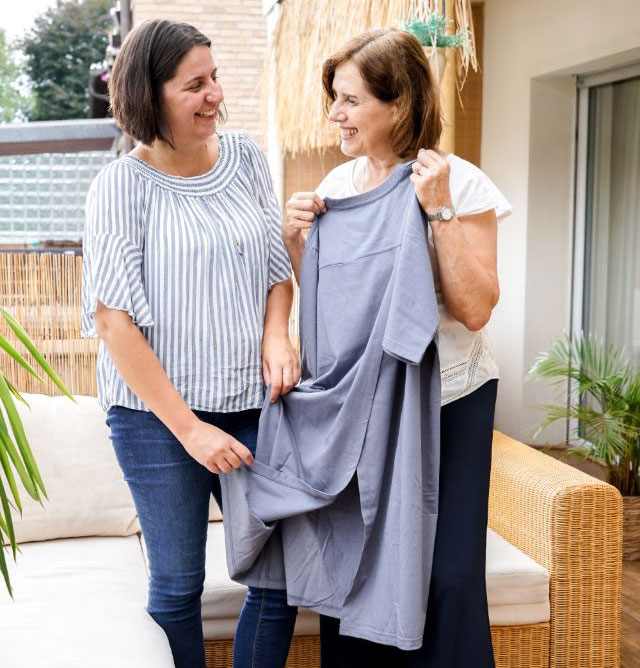
What is adaptive clothing?
Adaptive clothing in care settings refers to clothing that has been modified to allow for the easier dressing of residents by workers. While it makes the carer’s work easier, it also has great benefits for those in care; for individuals with restricted mobility, it minimizes awkward joint movements, pain & discomfort.
For the carers as well, it minimizes uncomfortable postures and forceful exertions whether at home or in a care facility. The impact of this difficult task being made easier cannot be underestimated.
In general, adaptive clothing looks and feels like regular clothing. The main difference is how the clothes are put on the body. To keep the clothing looking attractive, special care needs to be taken to mask the adaptations without changing the general look of the garment.
Adaptive clothing is usually roomier than normal clothing, stretchy fabrics, elasticized waistbands, magnet buttons, studs or straps are utilized to create the adjustments.
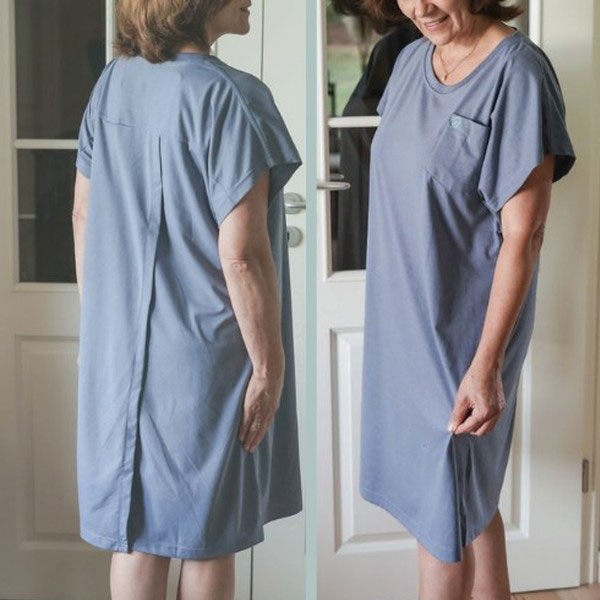
Clothing modifications need to consider specific constraints or problems experienced by individual residents. For example, our Sestra Care open back shirts are designed without traditional ties, straps, studs, or buttons.
Our “apron-style” shirt allows residents to be dressed while sitting or lying down, eases tasks for workers, and minimizes awkward shoulder postures normally experienced by residents.
Personal clothing can and needs to be adapted and tailored to every individual’s personal needs.
Adapted clothing and modified clothing enhances lives and care, helps individuals with physical or cognitive limitations to continue to live with dignity and comfort.
Adaptive Clothing: Open Back Long T-Shirt | Nightshirt | Hospital Gown
Shop Adaptive Clothing with open back design for women and men
Women long shirts
Choose Flamingo Pink or Pigeon Blue. Choose 3/4 sleeve length or Cap sleeve.
-
Adaptive clothing open back v-neck long t-shirt with cap sleeve for women flamingo pink – Ina
$55.00 -
Adaptive clothing open back round neck long t-shirt with 3/4 sleeve for women flamingo pink- Rita
$55.00 -
Adaptive clothing open back round neck long t-shirt with cap sleeve for women pigeon blue – Ina
$55.00 -
Adaptive clothing open back round neck long t-shirt with 3/4 sleeve for women pigeon blue – Rita
$55.00
Men long shirts
Choose Sea Green or Steel Grey. Choose 3/4 sleeve length or Cap sleeve.
-
Adaptive clothing open back round long t-shirt with 3/4 sleeve for men sea green – Rudi
$55.00 -
Adaptive clothing open back v-neck long t-shirt with cap sleeve for men sea green – Alex
$55.00 -
Adaptive clothing open back round neck long t-shirt with cap sleeve for men steel grey – Alex
$55.00 -
Adaptive clothing open back round long t-shirt with 3/4 sleeve for men steel grey – Rudi
$55.00
Why is adaptive clothing needed?
Adaptive clothing is a “win-win” initiative for workers and residents.
Providing patient care is physically and mentally stressful work and is associated with a high risk of injury to carers. In Australia, more than 58% of all injuries to care workers are a result of the manual handling of residents[1].
A big part of attending to patients’ daily needs in short or long-time care at home or care facilities involves dressing and undressing patients/clients.
Adaptive clothing reduces the physical strain for carers associated with residents handling and reduce pain for patients/clients.
This win-win is not just for both carers and patients, but also for families and loved ones who often wonder how they can help.
Benefits
Residents
The benefit of adaptive clothing and open back clothing for residents
Open back clothing is one example of adaptive clothing.
The benefit of open back clothing for residents is that it:
- Minimises awkward and painful joint movement
- Helps reduce emotional stress and fear of being handled because of pain and discomfort
- Reduces how much someone needs to be moved, reducing irritation and anxiety
- Sense of dignity and well-being is supported by having personal and not institutionalized clothing such as hospital gowns which are frequently used as a result of the issues outlined above
Benefits
Carers
The benefit of adaptive clothing and open back clothing for carers
Open back clothing is one example of adaptive clothing.
The benefit of open back clothing to carers is that it
- Reduces physical strain related to handling a resident during dressing
- Reduces time on dressing and handling a patient/client allowing for more time for social interaction and performing other tasks. This cannot be underestimated!
- It gives easy access to body parts required to monitor the health status of a patient and/ or provide medical treatment.
Benefits
Care Facilites
The benefit of adaptive clothing and open back clothing for care facilities
Given that both carers and those being cared for benefit from open back clothing, it stands to reason that care facilities would also benefit.
From their perspective, it
- Helps them provide practical ways of improving the well-being of patients and clients
- Provides a cost-effective method for reducing residents’ injuries associated with dressing
- Does not interfere with facility policies and staff duty statements, and
- Improves workplace safety and morale by easing workload and simplifying tasks
At Sestra Care Solutions, it would be our privilege to discuss your needs and recommend the best adaptive clothing for you or your loved one.
